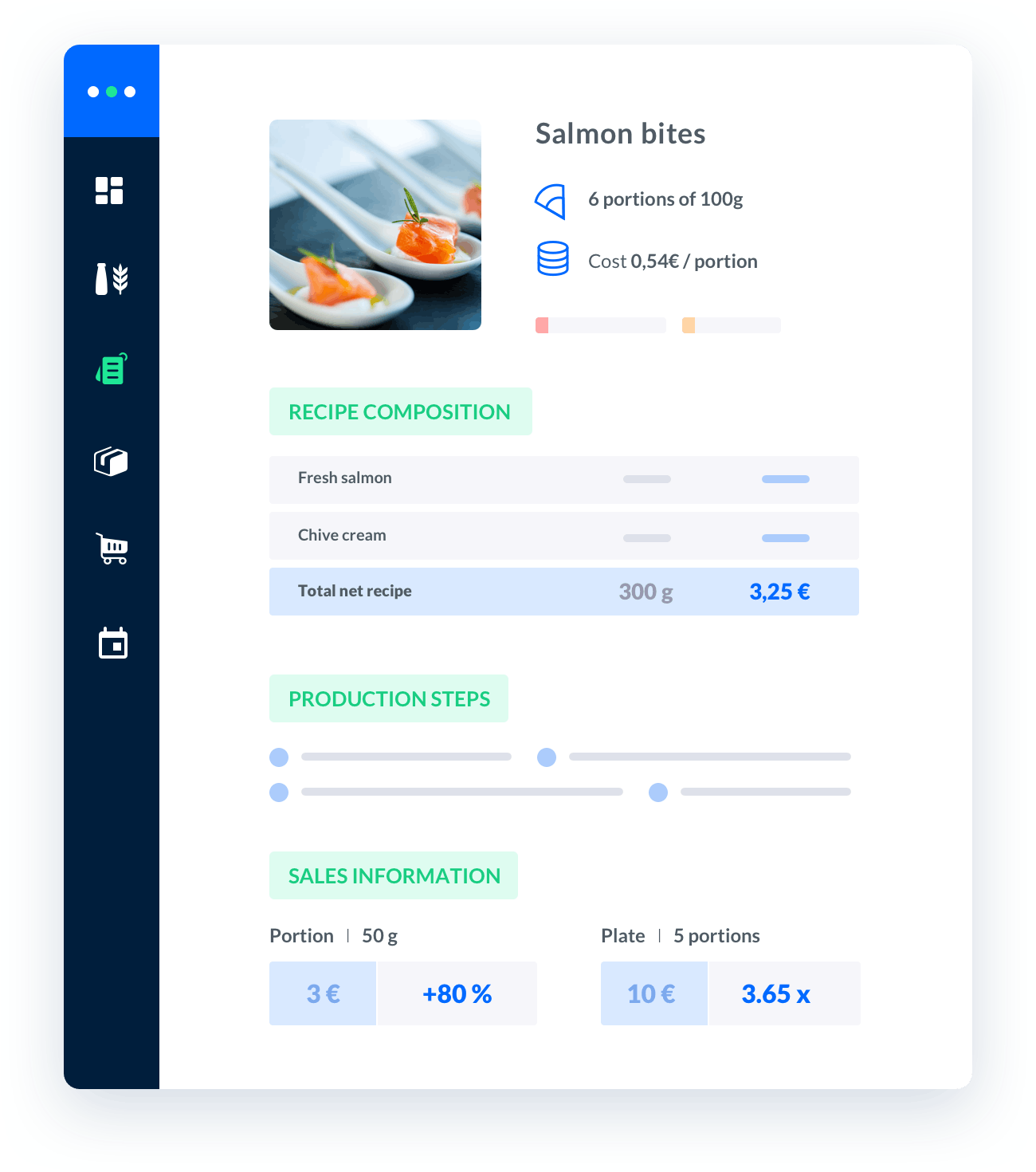variable costs restaurant
variable costs are a crucial aspect of running a successful restaurant.Understanding and effectively managing these costs is essential for maintaining profitability and sustainability in the highly competitive catering industry.

Melba: the food cost app to optimize the profitability of your restaurant
Discover how to optimize the profitability of your restaurant with melba

The ultimate guide to food cost restaurant
Learn more about the food cost basis and how to reduce your food cost percentage
variable costs are a crucial aspect of running a successful restaurant. Understanding and effectively managing these costs is essential for maintaining profitability and sustainability in the highly competitive catering industry. In this comprehensive guide, we will delve into the concept of variable costs in restaurants, their significance, and strategies to optimize them.
The Significance of Variable Costs in the Restaurant Industry
Variable costs in the restaurant industry refer to expenses that fluctuate based on the level of business activity. Unlike fixed costs, which remain constant regardless of sales volume, variable costs directly correlate with the number of meals served or the amount of food and beverages consumed. These costs are a fundamental component of the overall cost structure and play a pivotal role in determining a restaurant's financial health and profitability.
Food and Beverage Costs
One of the primary variable costs for any restaurant is the cost of food and beverages. This includes the ingredients used in menu items, as well as the cost of alcoholic and non-alcoholic beverages. Restaurants must carefully manage these costs to ensure that they align with their pricing strategies and profit margins. Effective inventory management, regular supplier evaluations, and negotiating bulk purchase agreements can help reduce food and beverage costs.
Labor Costs
Labor costs are another major variable expense for restaurants. These costs encompass wages, salaries, and benefits for all employees, including chefs, waitstaff, bartenders, and kitchen support staff. Optimizing labor costs involves efficient employee scheduling, cross-training, and implementing productivity-enhancing measures. By closely monitoring staffing levels and labor productivity, restaurants can strike a balance between providing excellent service and controlling costs.
Utility Costs
Utility costs, such as electricity, gas, water, and waste management, are variable expenses that directly correlate with a restaurant's operations. Energy-efficient equipment, regular maintenance, and adopting sustainable practices can help mitigate utility costs. Additionally, implementing smart technologies, such as energy management systems, can provide real-time insights and enable proactive cost-saving measures.
Strategies to Optimize Variable Costs
Menu Engineering
Menu engineering is a strategic approach to designing menus that maximizes profitability. By analyzing sales data, customer preferences, and cost structures, restaurants can identify high-profit menu items and optimize pricing strategies. This allows for effective cost-management while ensuring customer satisfaction. Moreover, regularly reviewing and updating menus based on seasonal availability and ingredient costs helps maintain profitability.
Effective Inventory Management
Efficient inventory management is crucial for controlling costs and minimizing waste. By implementing inventory tracking systems, conducting regular physical counts, and establishing par levels, restaurants can avoid overstocking or running out of essential ingredients. Furthermore, fostering strong relationships with suppliers and negotiating favorable terms can lead to cost savings and improved inventory control.
Streamlined Operations and Workflow
Streamlining restaurant operations and optimizing workflow can significantly impact variable costs. By analyzing processes, identifying bottlenecks, and implementing efficiency-enhancing measures, restaurants can reduce labor and time-related costs. This may involve reorganizing the kitchen layout, investing in technology solutions, or providing staff training to improve productivity and minimize waste.
Conclusion
Variable costs are an integral aspect of running a restaurant and require careful management to ensure financial success. By understanding the significance of variable costs and employing effective strategies, such as menu engineering, inventory management, and streamlining operations, restaurants can optimize their cost structure and improve profitability. Constant monitoring, adaptation to market trends, and a focus on customer satisfaction are key to thriving in the competitive catering industry.






